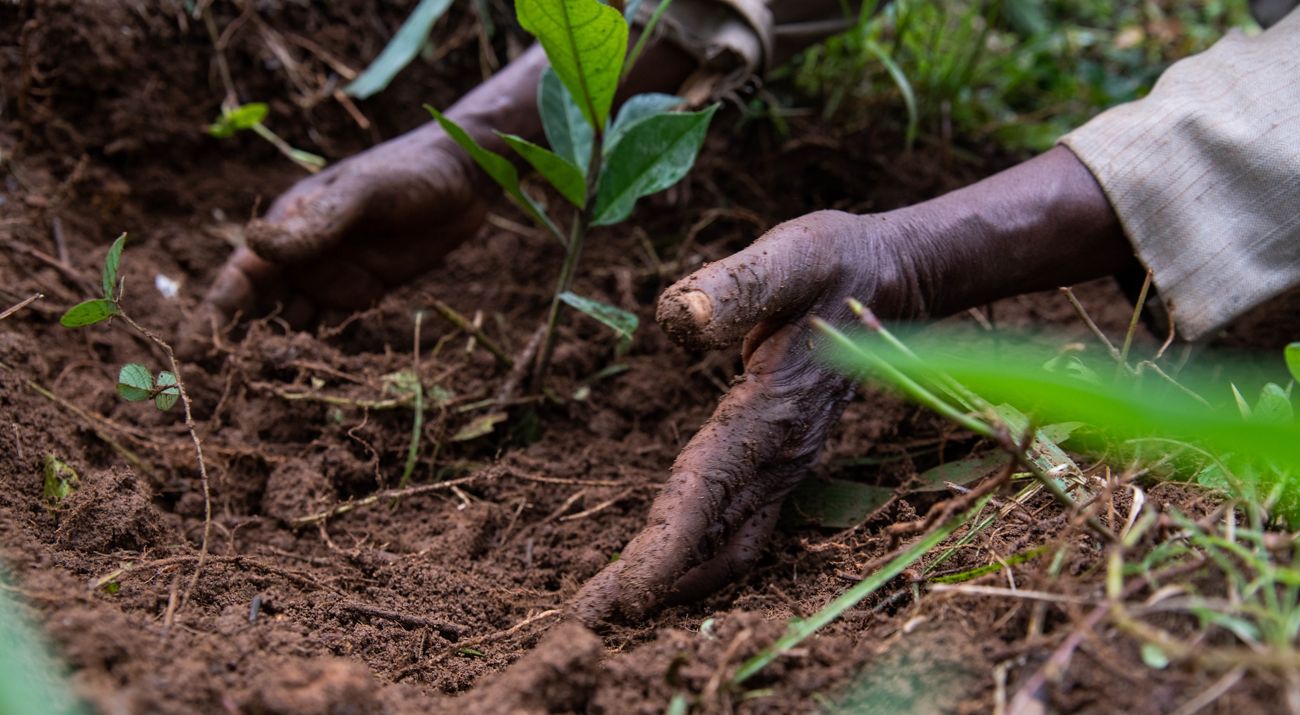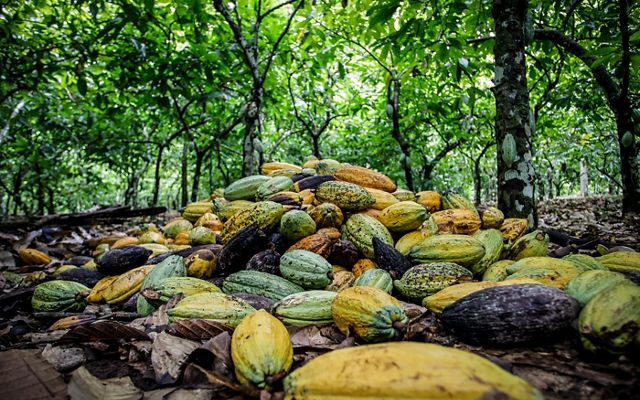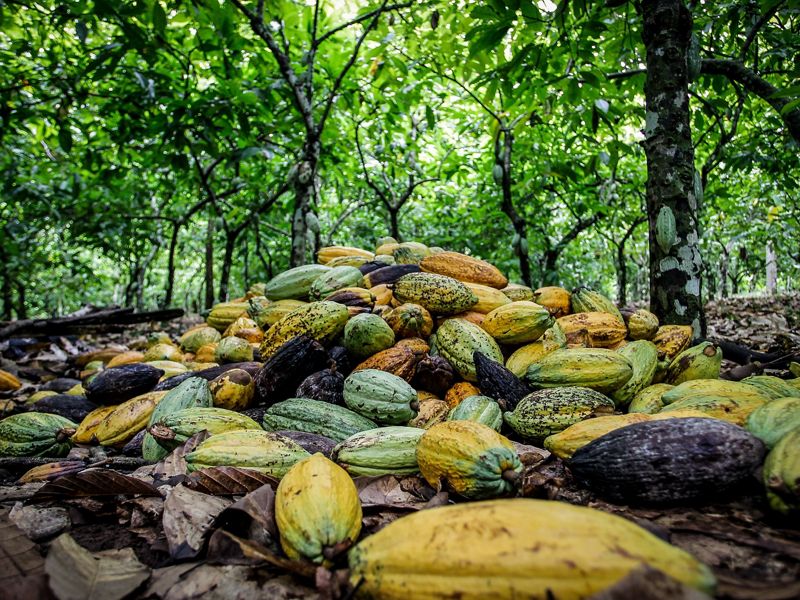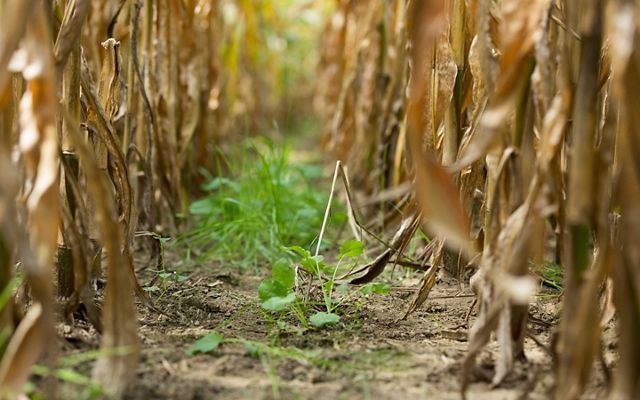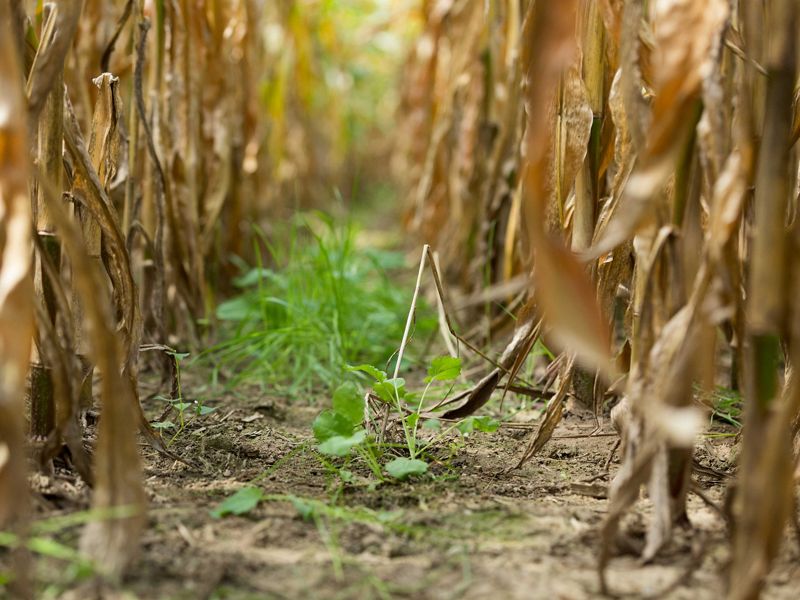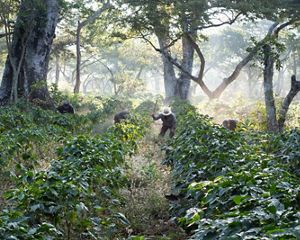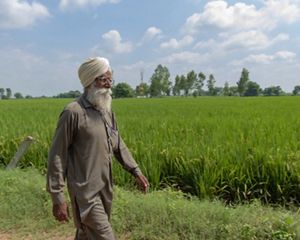Food, Climate and Nature FAQs
An explainer on regenerative food practices across forests, farms and seas. Plus, how you can support food systems that heal the planet.
You’ve got questions. We’ve got answers.
Experts from The Nature Conservancy are answering some of the most frequently asked questions about food, farming, climate change and biodiversity. Scroll through the whole guide or jump to specific questions in the links below.
Food has always convened people. Food, and the ways we grow it, can unite us in acting for our planet. Meet the unsung heroes producing food in ways that restore nature.
Current state of food & nature
Is farming bad for the planet? Does farming make climate change worse?
Regenerative food basics
What is regenerative agriculture?
What are the benefits of regenerative agriculture?
What are examples of regenerative farming practices?
Is regenerative food production new?
Food & climate change
How does climate change affect farming and our food?
Can agriculture/food production be a solution to climate change?
Is regenerative agriculture more climate resilient than conventional agriculture?
Taking action for a better food system
What is TNC doing to support regenerative food systems?
What can I do to encourage regenerative food systems?
How does my diet affect the planet? Should I change my diet?
Is farming bad for the planet? Does farming make climate change worse?
No, farming is not inherently bad for the planet. Humanity has partnered with nature throughout history to reliably cultivate nutritious food. Many cultures continue this reciprocity with nature, including Indigenous Peoples and local communities across the globe.
But the way the world is currently producing most of its food—by extracting more resources than we are giving back—is degrading the planet. The global food system is responsible for one-third of greenhouse gas emissions, 70% of freshwater use and 90% of tropical deforestation.
We now have a vicious feedback loop between food production and the degradation of nature. Conventional farming practices degrade soil health over time, making the land less and less productive. Farmers might then clear more natural habitat or compensate for these reduced nutrients by adding fertilizers. If too much fertilizer is added at the wrong time, it can wash into nearby waterways, harming freshwater and marine ecosystems by creating algal blooms and dead zones.
What is regenerative agriculture?
Regenerative agriculture is an approach to growing food that seeks to actively restore nature in the process. Regenerative production practices go a step beyond sustainability—they don’t just sustain the planet’s health by reducing harm, they improve that level of health.
For instance, farmers using regenerative practices that nurture living soil give back resources to nature—like water, nutrients and biodiversity—so the land can continue producing year after year. Many of these methods help stabilize our climate and some can grow more food than conventional farming while using fewer resources.
Since agriculture often refers only to how we produce food on land, we use terms like regenerative food production to include the nature-friendly ways of producing food from our oceans and freshwater, too.
What are the benefits of regenerative agriculture?
Regenerative food production is one of the most powerful solutions the world has to help reverse the interconnected crises of climate change and species loss. Across our lands, freshwater and ocean, regenerative food practices can:
- reduce greenhouse gas emissions
- support habitat and species diversity
- reduce nutrient pollution
- prevent soil erosion
- improve the quality and security of freshwater resources
- make communities more resilient to climate change
- improve social and economic wellbeing
And by restoring resources that support food production, regenerative practices help prevent the need to convert more habitats into farmland, easing some of the pressure on ecosystems and species. While the promise of regenerative food systems is significant, it is important to recognize that no one practice can achieve all of these outcomes, local conditions influence the effectiveness of different practices, and that there can be real tradeoffs that need to be thoughtfully navigated.
What are examples of regenerative farming practices?
There are so many, so consider this a sampler platter.
- Planting cover crops: During parts of the year when a farm’s main crops aren’t growing or have been harvested, farmers can plant other crops to maintain the soil. Cover crops like buckwheat, barley and vetch grow during these “off-seasons” and enrich soils through their deep roots and, in some cases, their ability to harvest nitrogen from the atmosphere. Some cover crops help naturally control weeds, allowing farmers to grow more food while using less of the herbicides that can harm other species. They also help soils retain more water, a huge benefit in semi-arid regions. Cover crops also can support farmer revenue by offering more crops to sell.
- Reducing or stopping tilling: While many farmers break up and turn over their soil to make planting easier, the process can release carbon to the atmosphere and reduce soil fertility. With patience and some added attention to soil conditions, no-till and reduced tillage farming can pay off for farmers and the planet by reducing climate emissions and fertilizer needs and helping soils capture and retain more soil moisture.
- Agroforestry: In some regions, planting trees among crops—or planting crops among trees—can create food forests that help curb deforestation and fight climate change. In the Brazilian Amazon, farmers are planting diverse agroforests of cocoa trees, taller fruit trees and various native hardwood tree species. The mix of crops supports soil health and provides diversified income while providing habitat for native species.
- Shellfish farming: When done with the right practices, in the right places, raising filter-feeder species like oysters can help restore ocean health. These shellfish filter the water when they feed, remove excess nitrogen, capture carbon dioxide and provide habitat for wild fish populations with the reefs they build.
Is regenerative food production new?
While the term “regenerative” has gained familiarity in recent years, this approach is not new. Indigenous and other local communities have pioneered methods for regenerative food production for millennial, developing ways of gathering and growing food in tight alignment with ecological conditions.
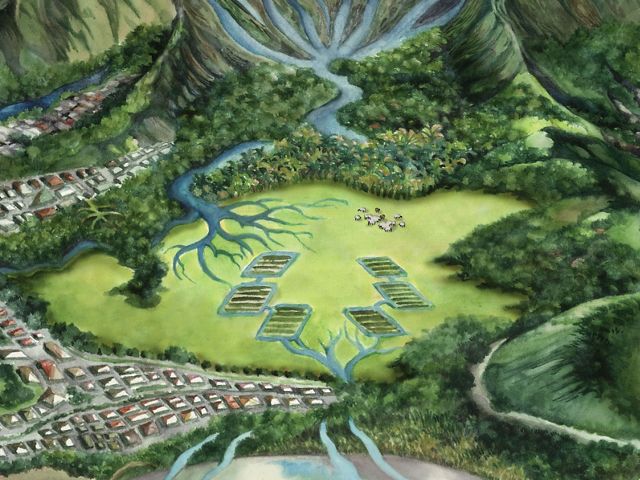
From the Mountains to the Sea
On O'ahu, Native Hawaiians are reviving traditional land practices that grow nutritious food while restoring health to nature. In the case of this ecologically and culturally self-sustaining "ahpua'a," taro farms act as giant water filters while fishponds keep a nutrients in balance. Read more in Nature Conservancy Magazine.
For example, the Mexica, who ruled the Aztec Empire in the 1300s, recognized 60 different soil classes and even had a word for soil degraded by irresponsible farming. The tradition of planting together the three sisters of corn, bean and squash has been practiced for millennia by peoples across the Americas, like the Haudenosaunee and the Maya. The three plants work in tandem to nurture the soil, retain moisture and control pests.
The ancestral wisdom of these communities can teach food producers a lot about how to manage resources in harmony with nature. By thoughtfully and respectfully complementing these lessons with the latest science and technological breakthroughs, the world can implement more regenerative practices across the whole food system.
How does climate change affect farming and our food?
Climate change is destabilizing our global food system by disrupting weather patterns and throwing off the reliability of growing seasons. The world is seeing more extreme and frequent droughts and flooding events that directly threaten crops. Periods of extreme heat make it not only unbearable but dangerous for the health of the more than 1 billion people who grow, harvest and transport food. Many of us feel the impacts of these disruptions and uncertainty through rising food prices.
The Intergovernmental Panel on Climate Change (IPCC) warns that climate change is already reducing food production in drier regions, and that any warming beyond 1.5°C above preindustrial averages will have increasingly severe impacts on food systems.
And, unfortunately, the climate stress on food systems is expected to increase. Research shows that despite agricultural advancements of the past 60 years, global farming productivity is 21% lower than it could have been without climate change.
The challenges extend to other parts of the food system like the processing, distributing and selling food around the world. As we’ve learned throughout the global COVID-19 pandemic, small shocks to supply chains can cascade into global ones. Storms and extreme weather can make it harder to reliably grow and transport food. Climate change also exacerbates the threat of human-caused conflict, which can render agricultural lands unusable and drive up world hunger.
Can agriculture/food production be a solution to climate change?
With more nature-based, regenerative practices, farming and ranching can be a powerful solution to our climate and biodiversity crises. So much of farming’s potential lies in its massive footprint: more than half of Earth’s habitable lands are already used for producing food.
Nature-based solutions can reduce carbon emissions from the food sector and store carbon. If regenerative practices can restore degraded land and increase productivity, they have the potential to reduce pressures to clear natural habitat.
And then there’s the climate solution underneath our feet: soil. More carbon exists in soils than in all vegetation and the atmosphere combined. This means that increasing organic carbon in soil by a relatively small amount—through practices like cover cropping and reduced tilling—can make a large contribution to the carbon removal the world needs.
Is regenerative agriculture more climate resilient than conventional agriculture?
Partnering with nature is one of the most effective ways to be resilient to the effects of climate change, and that’s exactly what regenerative food practices do. By enhancing soil health, crop diversity, water retention and reducing soil erosion, regenerative farming practices can help farmers adapt and ensure food production is more resilient to weather extremes like droughts and heavy storms.
Regenerative practices don’t just make fields more climate resilient, they also help farmers withstand uncertainty so they can continue to grow food. Farming can be a low-profit-margin enterprise, especially for the more than 600 million farmers (70-80% of all farmers) who work on less than 2 hectares (5 acres) of land. Regenerative food production can enable farmers to grow multiple crops at different times of the year, giving farmers multiple sources of income and security in case a main crop fails. Many regenerative practices can help soil retain water and nutrients, precious resources that are finite and expensive.
This is the decade to make it happen.
To help the world take on climate change and species loss, we're amplifying local leaders, influencing policy and developing breakthrough ideas.
Alongside local communities, individual farmers, policymakers and corporate leaders, TNC is helping build a more resilient, equitable and nature-positive global food system. For example, we:
- Develop smart strategies in partnership with local food producers—like seaweed growers in Zanzibar and rice farmers in Arkansas. We elevate their voices and scale the solutions they’re leading.
- Work with Indigenous Peoples and local communities in Tanzania and Mongolia to better manage grazing lands to store carbon, protect biodiversity and sustain livelihoods.
- Support hundreds of sustainability-minded shellfish businesses in the United States and Canada to prioritize climate action and ecosystem restoration in their growing practices.
- Partner with Pacific Island nations to help turn around one of the world’s most destructive commercial fisheries by bringing accountability, sustainability and community benefits to a canned tuna supply chain.
- Help farmers use regenerative practices and access long-term financing to grow soy on previously cleared land to prevent the continued destruction of the Cerrado, Brazil’s vast savanna.
To facilitate system-wide structural change, we are urging national and global policymakers to redirect the $600 billion USD that governments spend annually on the most harmful agricultural subsidies toward regenerative practices.
What can I do to encourage regenerative food practices?
There’s always a seat for you at the regenerative dinner table. Here are a few ways you can make positive change toward more planet-friendly food production:
- Keep feeding your brain. Read, ask questions, and think critically about trade-offs of one solution or another. Options across our food system are diverse and your informed choices can make a difference. Dive deeper into how the ways we grow food can be climate and biodiversity solutions with this article from TNC regenerative food expert Saswati Bora.
- Tell your policymakers that you care about regenerative food production. If you’re in the U.S., learn how the next Farm Bill can encourage farmers and food producers to adopt regenerative practices that improve soil health and address climate challenges.
- Talk to your local farmers. If you have a farmer’s market in your area, strike up a conversation with local food producers. Ask about sustainable and regenerative practices. Oh, and buy some products from them!
- Change up your side dishes. Find a recipe and some room in your diet for something new. Choosing foods with buckwheat, millet and quinoa, for example, not only provide nutritional variety, but also create market demand for farmers and encourage diverse crop rotations that improve soil health.
- Try to minimize food waste. By planning your meals, freezing leftovers and managing portion sizes, you can help reduce food waste, reducing pressure on the food system.
- Talk to friends and family. One of the simplest—and most important—things that everyone can do is to talk about climate change and how food is connected. We can't change what we don't talk about.

Green Up Your Inbox.
Get global conservation stories, news and local opportunities near you. Check out a sample Nature News email
How does my diet affect the planet? Should I change my diet?
Conversations around diet choice and consumer demand are often dominated by extremes. We’re advocating for a little more nuance.
We recognize that a person’s choice of diet is a deeply personal matter that reflects a complex web of cultures, traditions, economics and access. We support flexible food choices and don’t advocate for any particular diet choice – but we do strongly encourage people to learn about the food they eat, the way it’s produced and the trade-offs that are included.
For example, an apple grown organically but shipped across the world has different trade-offs than one grown and consumed locally but with the use of fungicides and insecticides.
There are many diet choices and changes that can benefit the planet. For instance, sustainable fish and shellfish can provide healthy protein at a fraction of the emissions of livestock.
And, of the more than 50,000 edible plants in the world, just 15 of them provide 90% of the world’s caloric intake. Rice, corn (maize), and wheat make up 2/3. This lack of dietary diversity is leading to unhealthy nutritional outcomes, along with stress on natural habitats.
By diversifying our meals, we can support crop rotations for farmers and effectively increase biodiversity in our agricultural ecosystems. Choosing diverse grains like buckwheat, millet and sorghum; diverse seeds like quinoa, hemp and chia; and diverse legumes like beans, chickpeas and lentils not only provides nutritional variety, but also creates market demand for farmers and encourages crop rotations that can improve soil health.
Overall, moving to regenerative food systems results in diversified production practices and more diverse diet choices, a win-win cycle for the inextricably linked human and planetary health.
